| St.Mary's History | St Mary in the Castle Friends | HOME |
| Vintage Pictures | News & Stop Press | Coming events |
This section
contains extracts of information taken from the booklet St Mary-in-the-Castle
– The Hidden Gem of Hastings. |
||
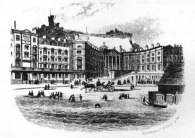 |
With 175 years of history behind it, the present St. Mary-in-the-Castle stands as one of the proudest of Hastings’ monuments and is a thriving new Arts Centre serving locals and residents alike. Rescued from neglect and disrepair by a dedicated band of Friends and the professional assistance of architects, builders and other specialists, St Mary’s lives again in a new guise, recalling an age of elegance and charm and bringing to the general public an opportunity to enjoy a wide ranging variety of arts performances and exhibitions. | |
| In 1786 Hastings was beginning to attract many visitors and its fortunes were looking up. The population expanded rapidly, trebling in 30 years. Thomas Pelham, Earl of Chichester saw an opportunity to develop his land at the bottom of the cliff with houses to accommodate the growing population, together with a new church for their spiritual needs. Before building could start, a large chunk of cliff had to be removed. This was undertaken by John ‘Yorky’ Smith who was also responsible for building several Martello Towers along the coast in the early 1800s. The architect commissioned to design and oversee the construction of the church and crescent was Joseph Kay. The Pelham project included a crescent of houses with the church at its centre, together with an arcade at the lowest level, with public rooms for recreation and leisure. The whole complex was designed as a place for visitors to live, worship and be entertained. Building work was begun in 1824 and the foundation stone of St Mary-in-the-Castle church was laid in 1825. |  |
|
| The architecture of the church, in response to contemporary taste and the prevailing interest in classical Greece and Rome, was in complete contrast to any existing buildings in Hastings, whether ecclesiastical or secular. The church opened for worship in 1828 and attracted large congregations, seating 1500, only 200 of which, however, were free public seats. Tickets were sold for other pews or pews could be rented. The church was evangelical from the first and its early incumbents were known as Perpetual Curates as it was, officially, a proprietary chapel and not a parish church. It was not until 1884 that the status of St Mary's changed to District Chapelry, but the incumbents of St Mary's were nevertheless responsible for the whole of the parish at all times. | ||
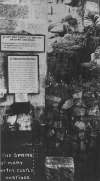 |
After the Second World War the population of Hastings began to shift away from the town centre and attendances at St Mary-in-the-Castle gradually declined. In 1951 Pelham Crescent and the Church were granted the status of Grade II* listed building. By 1953 the church was sharing a vicar with Emmanuel in Priory Road. By 1970 St Mary's was deemed to be surplus to requirements and the final services took place on September 13th of that year. It was then taken over by the 'Assemblies of God Full Gospel Church', but by 1978 the maintenance costs had outstripped their means and they relinquished it. In 1982 the Church Commissioners sold it. Necessary maintenance work was neglected and the interior began to suffer from the effects of vandalism. In 1986 St Mary's was in such a sorry state that it verged on being declared a dangerous structure. | 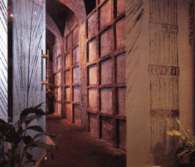 |
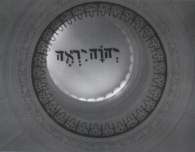 |
With the support of the Queen Mother Hastings Borough Council acquired the freehold to the church and 7 Pelham Crescent and, with the help of English Heritage, subsequently began restoration work. In 1990, the first contract (value about £1.3m) was let, to rebuild the roof, restore the ceiling plasterwork and make the building structurally sound. While this work was in progress, the Council tried to interest private sector heritage producers to take up a lease on the building. Also, from 1987, groups of local people set about demonstrating that a cultural centre of this size was needed in Hastings. St Mary's was considered to be ideal because of the building's spatial qualities, excellent acoustics and general atmosphere. 1988 saw Pelham Arcade being listed Grade II. |
|
In November 1991 a group of local people met in the Stag Public House to discuss the fate of St Mary-in-the-Castle. Weekly meetings followed and a petition to support a report to be presented to the Hastings Borough Council in January 1992. The Friends Of St Mary-in-the-Castle (FOSMIC) obtained consent and £10,000 to develop their ideas for the future of St Mary's as a multipurpose cultural centre. At this time FOSMIC had no idea where funds would be found to restore St Mary-in-the-Castle and many avenues were explored before the National Lottery came into being. In 1994 the Friends (FOSMIC) acquired charitable status and became a Company Limited by Guarantee. Work on fund-raising proceeded apace and was greatly boosted by a grant from the EU and, in July 1995, from the Arts Council National Lottery Board, one of the first awards in excess of £1m. In 1996 the building was formally leased to the Friends and in June of that year the second main phase of restoration began (value about £1.5m), resulting in the long-dreamed-of opening of St Mary-in-the-Castle as a new centre for the arts. |
||
| The first concert in the unfinished refurbished auditorium took place in October 1997. This was followed by a Preview Season during which the works were completed and the differing strands of the programme were introduced. The celebrations commemorating the official opening of St Mary-in-the-Castle as a new centre for the arts were marked by the visit of the Rt Hon Chris Smith MP Secretary Of State for Culture, Media & Sport on 3rd November 1998. Thanks must go to the volunteers who believed in the potential of St Mary-in-the-Castle and who have worked steadfastly over the years, and also to those who continue to give their time to ensure the success of the venue. | 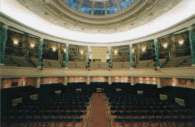 |
|
020831
030125
050328
050329
061011
070606
100201